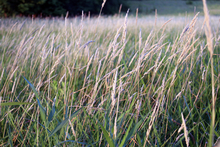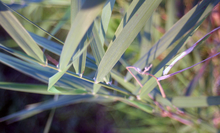Quick facts
- Reed canary grass has been planted throughout the U.S. since the 1800s for forage and erosion control. It can outcompete most native species in natural wetlands and presents a major challenge for restoration in wetland mitigation efforts.
- Recent research on which populations of reed canary grass in Minnesota are native and which are non-native found that reed canary grass populations along the rivers sampled in Minnesota are likely predominantly native.
- Regardless of origins, reed canary grass can form dense, dominant cover and require control when there are management goals related to maintaining or restoring other plant species. For example, the re-establishment of trees is very challenging in dense reed canary grass stands.
How to identify reed canary grass
- Reed canary grass (Phalaris arundinacea) is a perennial cool-season grass that grows two to six feet high.
- Prefers moist soils such as ditches, stream banks and wetlands, but can also grow in upland areas.
Stem
- Hairless, hollow, smooth, rounded.
Leaves
- Rough texture, one-fourth to one-third inch wide, gradually tapering, up to ten inches long.
- Prominent, highly transparent membrane at the junction of leaf sheath and blade (called a “ligule”). This is how to tell the difference between reed canary grass and native bluejoint grass.
Flowers
- Three to sixteen-inch seed heads are green to purple when in bloom and change to a beige-tan color over time.
- Typically bloom from May to mid-June.
Seeds
- Shiny brown in color, are immediately capable of germination at maturity.
Roots
- Forms fibrous root mass at rhizome nodes.
- Spreads via rhizome, which is a buried plant stem that sends out roots and shoots.
Reviewed in 2022



